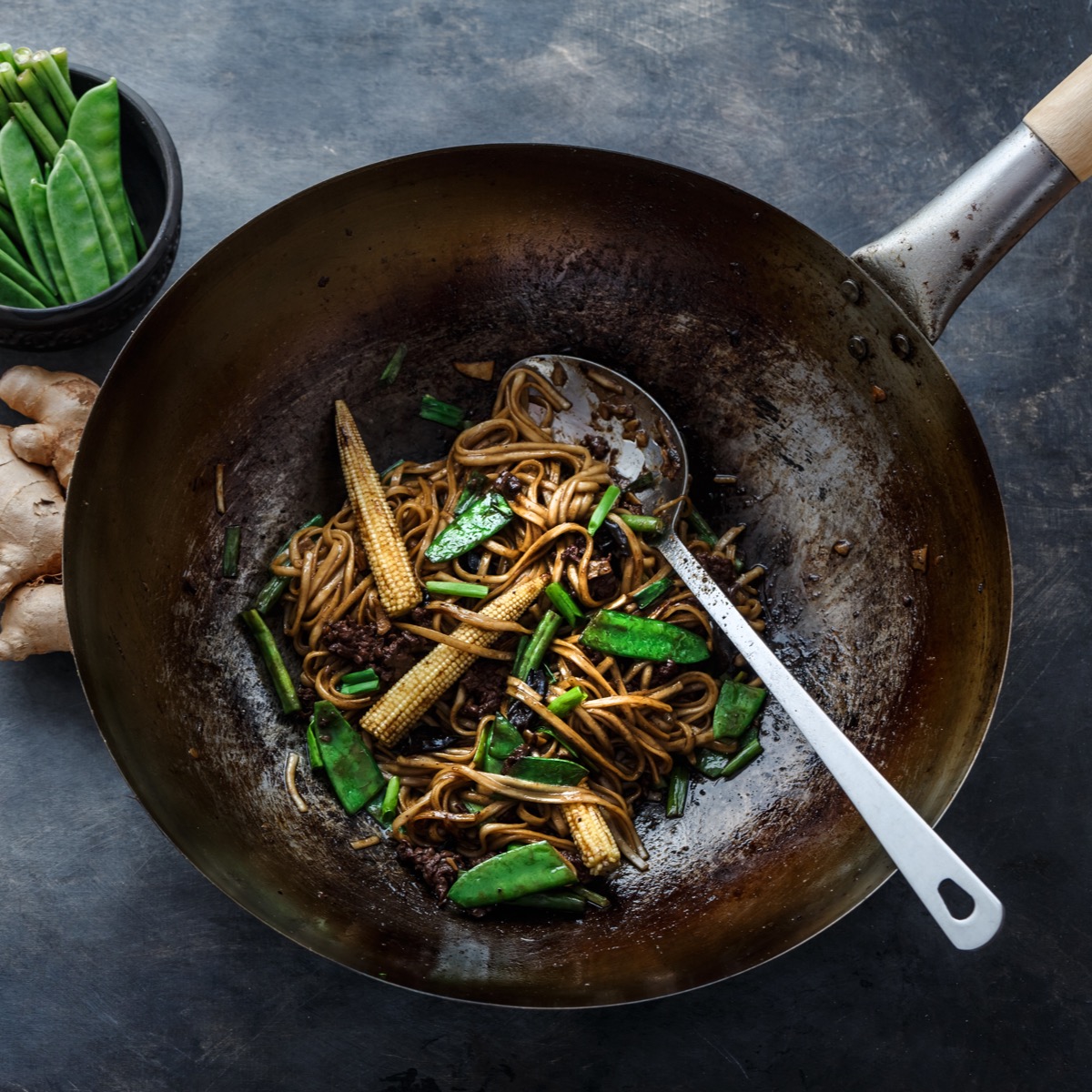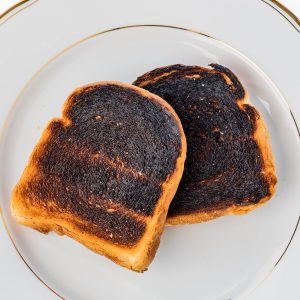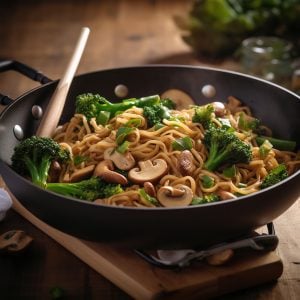How to Stir Fry in Your Kitchen
Every week or so, I get a craving for Chinese food. Something about those crunchy vegetables, tender meats, and incredible flavors forces me to dig out a menu buried in a kitchen drawer and order from a local restaurant.
I wanted to learn about the Chinese way of manipulating food, so I dug out the wok I inherited when I got married, started reading up, and experimented with the art of stir-frying.
What I learned bout the ancient technique of Stir-Fry is you have to be prepared before you start. So often, I write about prepping ingredients before you start cooking, but this is a must when doing stir-fry.
Prepping the ingredients will take longer than cooking. But once you get your pan hot…..you can’t stop.
Stir-frying will also give you some practice with your cutting skills since each ingredient will be bite-sized (Have you ever seen a knife in a Chinese restaurant?) and have different types of cuts.
Once prepped, I like to arrange the ingredients in bowls separated by cooking times. The technique is to quickly fry the ingredients in a large pan over high heat while constantly stirring to preserve the food’s flavor, color, and texture and keep the vegetables crisp. It’s easy enough.

Equipment
Typically one uses a wok, a large deep bowl made of thin metal with gently curved sides. The heat concentrates at the bottom of the pan, and the curved sides allow you to push the ingredients to cooler areas.
You can use a typical frying pan, but it won’t cook as fast, thus keeping your vegetables as crisp as you want.
Ingredients
Other than a few specialty ingredients, you can use whatever you have on hand to make a stir-fry. It’s a great way to clean out the vegetable drawer.
Because you’ll be cooking at very high heat, you want to use a high smoking point oil like peanut, safflower, corn, or canola. Some of the specialty ingredients that you should be able to find at your local supermarket are soy sauce, hoisin sauce, and chili sauce. Short or medium-grained rice is best for accompanying your stir-fry.

Technique
You start by prepping the meat or chicken. Then, cut the meat into thin bite-size slices and marinate to protect it from overcooking.
The marinade can be made with various liquids depending on the flavor you are trying to obtain. Typical marinade ingredients include chicken or beef stock, soy sauce, hoisin sauce, chili sauce, corn starch, brown sugar, rice wine, or dry sherry. Marinate for a least one hour; longer is better.
Prepare an aromatic mixture of finely chopped herbs and spices to add flavor and aroma to the stir-fry. Typical aromatics include garlic, scallions, red pepper flakes, shallots, and chili peppers.
Next, prepare your vegetables by cutting them into small pieces and separating them according to their cooking times. For example, slower-cooking vegetables like asparagus and green beans will be added before faster-cooking vegetables like pea pods and tomatoes. Now you’re ready to stir-fry.
Check out my recipe for Chicken and Broccoli Stir-Fry but experiment with different marinades, aromatics, and vegetables to create your own special stir-fry.

















2 Responses
I study your entire section of saute and fry; these 2 techniques are more frequent used in my daily cooking. I am a chinese so i do lots stir fry dish; somehow, i am kind of hesitate to stir fry a lot (but only one dish per meal as the maximum) because of stir fry produce lots smook.
After I read the saute and fry article, i added more knowledge about these 2 technique and try to use these mix knowledge to apply on stir fry. Smoke still brother me. Please see my following step and understanding are correct.
Pre-heat wok (with no oil) until it can evaporate immediately as i sprinkel few drops of water. Now the wok temp is at least 212 f, i add fat (use peanut oil for stir fry); as soon as i add oil, the wok smoke; in order to reduce smoke, i put my ingredients into the wok. I think the pernut oil is not reach proper temp for stir fry; however, the smoke made me too nervous to wait until oil in convective condition.
I am using the tradition wok bought from Chinese supermarket; I am not quite sure the material (for sure not spun steel, which I am in searching). I also have a All-clad tri-ply stainless steel stir fry pan; but have’t apply above mentioned method on it because I used it to stir fry and end up with headache because of it is so sticky.
Please give me advice to make proper adjustments from my mentioned steps.
Thank you very much!!
P.S. Love this website and article; they are very useful to expand my culinary knowledge and keep myself improving ^__^
Hi Ivan! I stir fry a lot and have found that my favorite oil is coconut oil (organic virgin coconut oil to be specific). It has a fairly high smoking point, and if it does smoke, it doesn’t smell as bad as peanut/vegetable oil (plus it is better for you). I add the oil to the wok when I turn the heat on so I can watch for when the oil begins to ripple…that’s how I know it’s hot enough. Approaching it this way should eliminate the smoke problem every time!